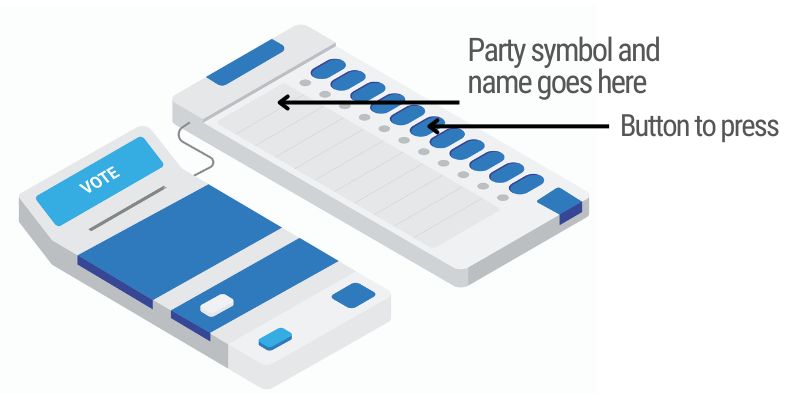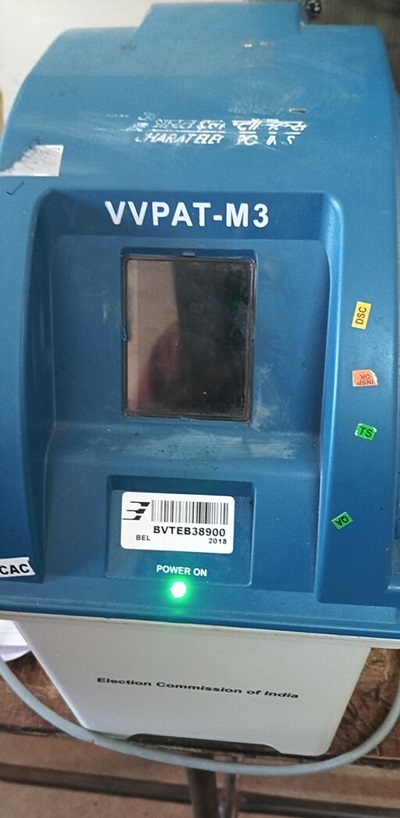General Elections in India. Know the Basics
Written by Nayantara Singh, a grade 10 student
The Election Commission of India (ECI) announces the election dates. It also sets what’s called the Model Code of Conduct – this is basically a set of rules that govern the conduct of all political parties and candidates to make sure that the elections are conducted fairly and impartially.
Written by Nayantara Singh, a grade 10 student
On March 16th, 2024, the Election Commission of India (ECI) announced the 18th Lok Sabha elections. These general assembly elections are held to elect the 543 members of the lower house of the parliament or the Lok Sabha.
How are the members elected?
Each state is divided into constituencies, which are small districts. From each constituency, a representative from each competing political party contests the elections. This means that all the voters in a particular constituency cast their vote for one of these representatives.
The candidate who wins from each constituency becomes the representative for that area and becomes the MLA (Member of Legislative Assembly). The political party that holds the majority of the seats or has the most MLAs in the Lok Sabha becomes the ruling party.
Who announces the elections?
The Election Commission of India (ECI) announces the election dates. It also sets what’s called the Model Code of Conduct – this is basically a set of rules that govern the conduct of all political parties and candidates to make sure that the elections are conducted fairly and impartially.
So, how is the Prime Minister of India selected?
The President of India selects and appoints the Prime Minister (PM). The PM is selected from among the members of the ruling or majority party in the Lok Sabha. The PM then selects his cabinet of ministers. Some MLAs, therefore, have dual responsibilities: as the representatives of their constituencies and as ministers.
How do 900 crore voters cast their votes?
The Indian general election is, unsurprisingly, the biggest democratic election in the world.
So, how is the voting process carried out?
Voting will take place from April 19th to June 1st, 2024. The country is divided into 7 phases. Each phase contains different cities and multiple constituencies in each state.
The voting kicked off last week (April 19th), as Phase 1 voters cast their votes on April 19th in their given voting centres. Phase 2 occurred on 26th April, and the third phase will be May 7th, 2024. The last phase, phase 7, will be completed on June 1st. The election results will be released by the 4th of June, 2024.
Where do people go to vote?
Thousands of polling stations are set up across India to make voting possible for crores of people, including remote and challenging terrains. For example, special arrangements are made to set up polling stations in distant villages, wildlife sanctuaries, and shipping containers to ensure every eligible voter has access! It’s very tough to carry the voting machines to remote places to ensure every eligible Indian can vote!

Voting process
- A polling official checks the voter’s name on the electoral list and their ID.
- Then, an official marks the voter’s finger with a special ink – so no one can vote twice. Then, the person gets a slip, which they must hand over to go ahead.
- The voter then goes to a private booth where the actual voting happens using an Electronic Voting Machine (EVM) (more on this below)
- Inside the booth, voters press a button next to the candidate of their choice. Once they do this, they get a light and a beep sound. They can also see a paper slip with their choice displayed in a transparent window on the Voter Verifiable Paper Audit Trail (VVPAT) machine.
- The slip then goes into a safe and secure container attached to the machine
Counting of Votes
After the final phase of voting, the votes are counted, and the results are declared. The 2024 Lok Sabha election results will be announced on June 4.
What are Electronic Voting Machines (EVMs)?

Electronic Voting Machines (EVMs) are used to vote in India. These are machines that are made to be simple to use and secure. They are designed in a way that shows the names of candidates and their symbols, so the voter only needs to press a button next to the name and party symbol
EVMs are battery-operated. They can store thousands of votes and keep the voting process quick and safe , so no one can tamper with them.
Alongside EVMs, there is something called the Voter verifiable paper audit trail (VVPAT) system.

This gives a paper trail for each vote cast, so voters can see their selections physically before the slip is collected in a sealed box.
These steps and systems are in place to ensure that the election process is fair and that every citizen’s vote is counted accurately.

Better Your Child’s G.K. In 3 Minutes – Get This Free Newsletter
Get fun facts, simple and easy news, quizzes, and lots of other interesting things to read in your mailbox – for free! It’s what we call GK-on-the-go!
I Kid You Not now has a large readership across India and also parts of the world. If you want to write for us, you can submit your story here. You can also apply to become a news anchor. Apply here



Comments